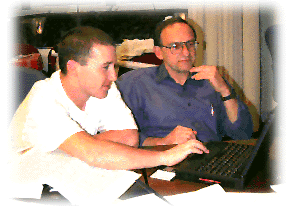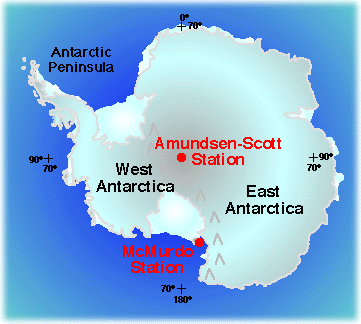
|


Visit Dom's NECAnet Site   I am a physics teacher at Norwich Free Academy, in Norwich, Connecticut.
I have the opportunity to join a team of research scientists, led by Bill
Baker from Florida Institute of Technology and Jim McClintock from the University
of Alabama, at McMurdo
Station.
I am a physics teacher at Norwich Free Academy, in Norwich, Connecticut.
I have the opportunity to join a team of research scientists, led by Bill
Baker from Florida Institute of Technology and Jim McClintock from the University
of Alabama, at McMurdo
Station. The research we are undertaking focuses on certain Antarctic invertebrates that resist predation, microbial infection, and fouling. It is hypothesized that these organisms produce chemicals that account for their defenses. Unlike you and I, the organisms that are being studied can not defend themselves by fleeing or fighting. In spite of a lack of obvious defenses, the organisms have evolved and survived for millions of years. In the course of the next eight weeks, divers will collect organisms that live 30 meters below the ice. The organisms will be freeze dried and placed in solvents. The chemicals that dissolve in the solvent will be studied to determine if any will resist bacterial growth. The most valuable chemicals will be those that have the potential to treat illness. Many frequently prescribed medicines are naturally existing chemicals obtained from terrestrial plants or micro-organisms that are grown on an industrial scale. Since the diversity of plants and invertebrates in the oceans is so much greater than those found on land, its reasonable to expect that many useful natural chemicals will be found in the marine environment. When not working with my students, I enjoy skiing, jogging, and working with computers. I'm leaving my wife, four children, and two grandchildren to fend for themselves for the fall and early winter.  The Chemical Ecology of Shallow-Water Antarctic Marine Invertebrates Principal Investigator: James B McClintock, University of Alabama at Birmingham
The research team I joined for my Antarctic experience studies marine invertebrates such as sponges. The researchers are interested in chemical ecology, which is the study of chemical interactions between organisms and their environment. Organisms produce chemicals for a variety of purposes. Some bioactive compounds (those having an effect on a living organism) are produced to attract mates. Many others are used for self-defense.
 McMurdo Station. Much of Dom Tedeschi's research will be conducted in Crary Laboratory in the center of the photopgraph. Photograph by S. Shipp, Rice University.
 Dom Tedeschi will be working with a research team at McMurdo Station and may have the opportunity to travel to the South Pole  Detail of the McMurdo region.  September 1997
August 1997
December 1996
November 1996
October 1996
|
